I’ve mentioned and shown a few times now that I like to use fountain pens for sketching, but I haven’t really written about it yet in a dedicated post. Fountain pens are popular with many sketchers, and there are good reasons for it: they’re portable, refillable, flexible and then there’s the expressiveness of the linework.
I’ll always prefer a fountain pen over a fineliner or technical pen, I just like the lines it creates – but of course any pen is better than having no pen with you.
Here’s a video version of this post:
My fountain pens for sketching
Over the years I’ve accumulated different fountain pens. For sketching, I never use expensive fountain pens, and I don’t own any pen that has cost more than $25.
Back when I did a lot of type design and calligraphy (does anyone remember my lettering days?), I owned an expensive (antique) Waterman fountain pen with a flexible nib that had cost around $400. I used it until I broke it by accident and felt so bad about it that I never got a replacement, even though I found it really nice for pointed pen calligraphy. I know a fellow designer who changed her will to include all of her expensive pens!
Well, I think I’m just not prepared to spend that much money in my tools, especially for field sketching purposes: I would feel awful if I lost it in the grass, and this happens more often than I’d like. So I go with the inexpensive models, and you know what: most of them are a joy to use.
I also take most of my handwritten notes with fountain pens, and I still own one antique model that I almost never use because it belonged to my grandma – a Montblanc pen from the 50s.
Here are the fountain pens I use regularly. If you follow other sketchers you will recognize most of these:
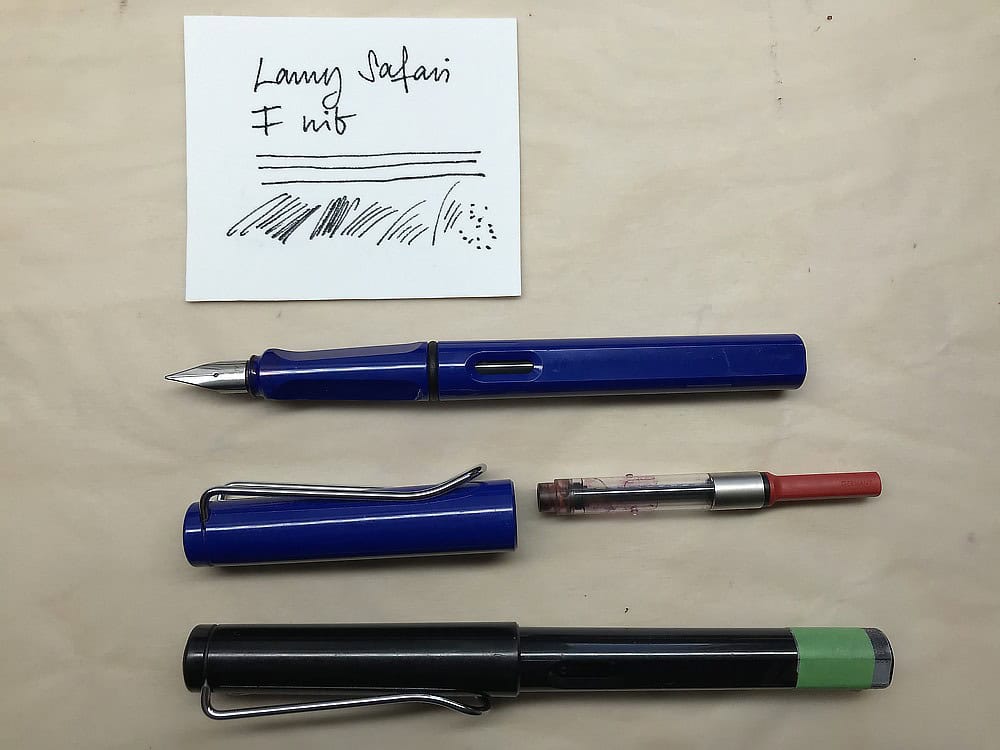
Lamy Safari: A nice all-round German fountain pen that is very ergonomic and has a great price point (around 20€). I have several of these fountain pens. They dry out from time to time and can be slightly scratchy, particularly with the ink I use (more on that in a bit), but they give you a very nice line quality. Many Germans my age learned writing with Lamy pens (they still offer the same cute wooden model for grade schoolers), I’m not sure if children still use fountain pens in school these days.
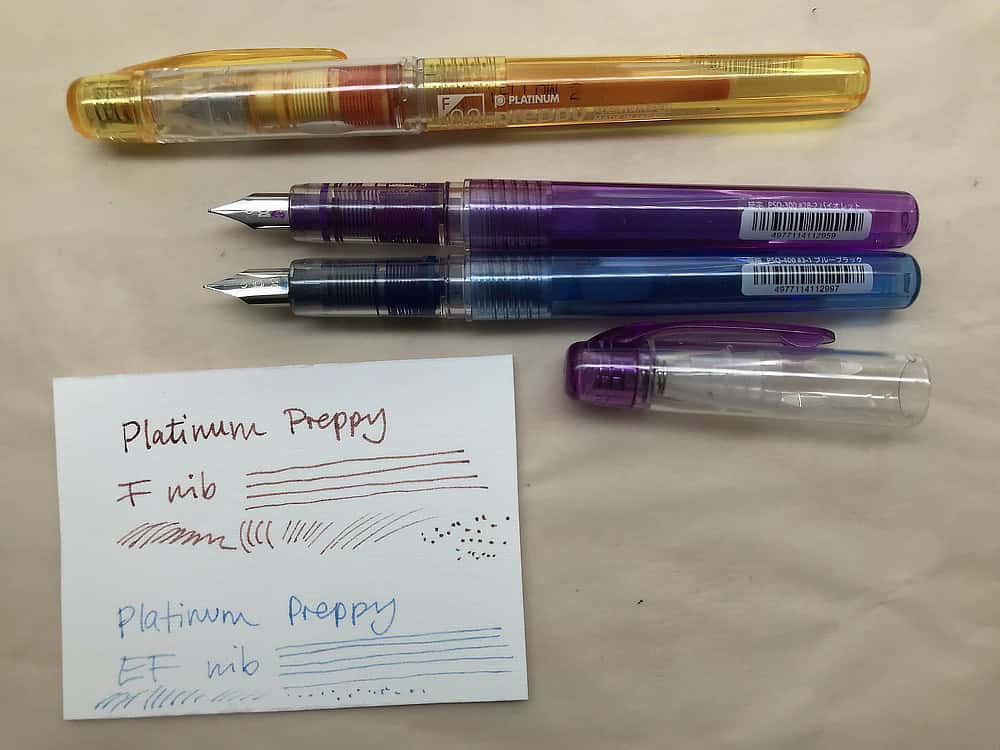
Platinum Preppy: These are Japanese fountain pens that you can buy with wonderfully thin EF nibs if you’re lucky, but the F nibs are still pretty great. The plastic is a bit flimsy, but at a price point of 8€ you can’t go wrong with them. They almost never dry out. I have several of them in all kinds of colors, and they’re just fun to use.

Kaweco Sport: Maybe my favorite model of them all for the line drawing quality. These German fountain pens are impossibly cute (just 13 cm when closed) and the ink flows very well. The cap serves as an extender, which minimizes the risk of losing it (you need to buy an extra clip for these). The F nib is very fine, the cost is around 20€. It only has a small ink capacity, but this has never been a problem for me. These are my main drawing tools, along with the Preppy pens.
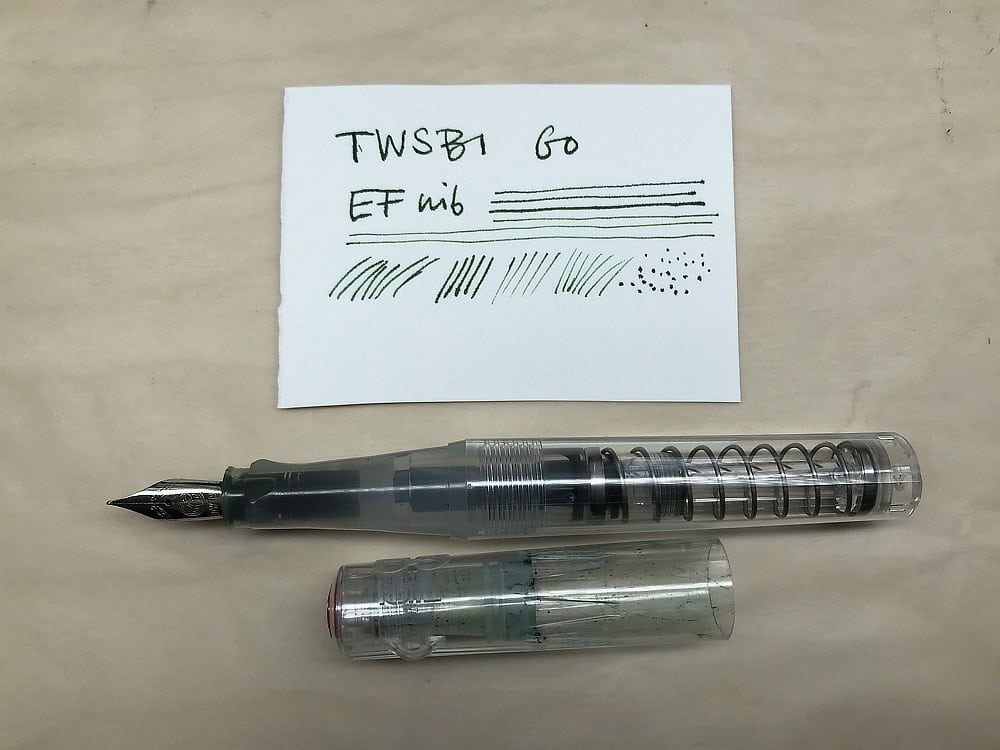
TWSBI Go: This one is a bit different because it uses a push mechanism to refill – very handy and it carries a large amount of ink. I use it with water-soluble fountain pen ink for writing, as I find the nib to be quite broad (it’s an EF or F but still very broad?). I like the overall handling of this pen and the refill mechanism, but I keep misplacing and dropping it because the cap doesn’t have a clip.
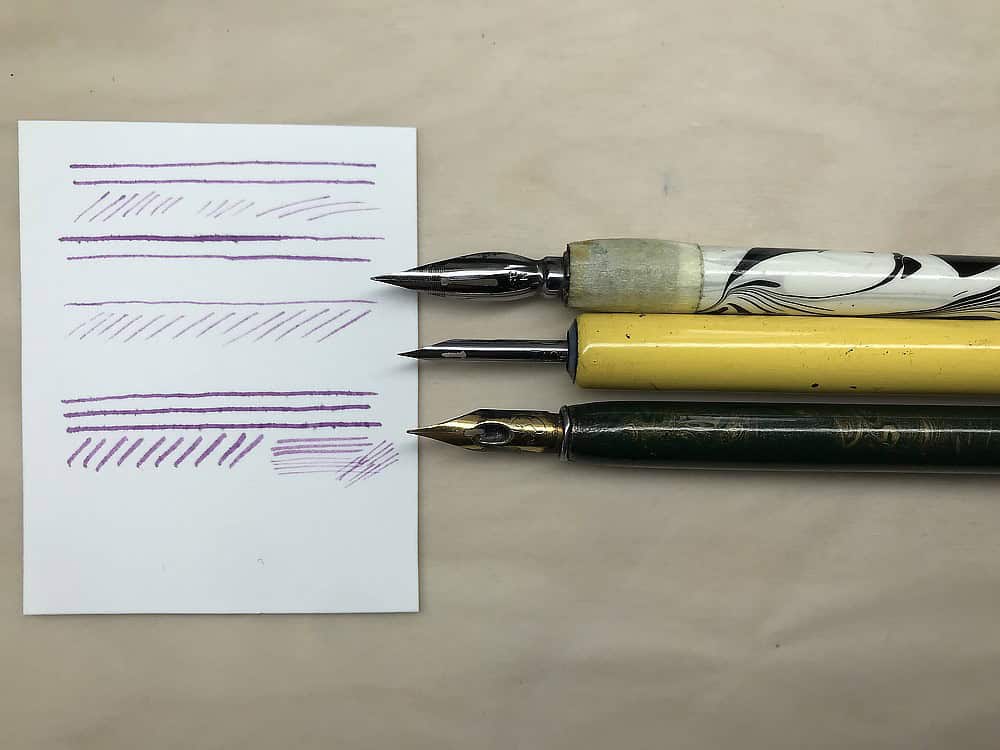
Dip nibs: And, when I’m at home, I also use dip nibs – those work with all kinds of inks, and of course you can choose amongst dozens of nibs. Amazing drawing tools, but of course not really suited for field work (although I’ve heard from sketchers who bring small ink containers with them!)
Known issues with fine nibs
I like to equip my pens with EF or F nibs, so very fine overall. Usually you can choose when you’re buying the pen, or change the nib later. I prefer fine lines over bold expressive ones (I can get bold lines from brushes), and this means it can sometimes be hard to keep the ink flowing well, and the pens can be slightly scratchy. I often have to reactivate the ink flow with a bit of water, and if I haven’t used my pens for a while, I might need to take them apart to flush the feed (the part that brings the ink from the cartridge to the nib). All of this has of course to do with using waterproof fountain pen inks, too. But, I accept these trade-off for the really fine, waterproof lines I get.
All of the mentioned fountain pens except the TWSBI can be fitted with a converter for easier refilling, for some of them I just use an empty cartridge that I refill with a syringe. Generally, the nib can be turned to the underside for drawing, to create even thinner, lighter lines.
The inks I use for drawing
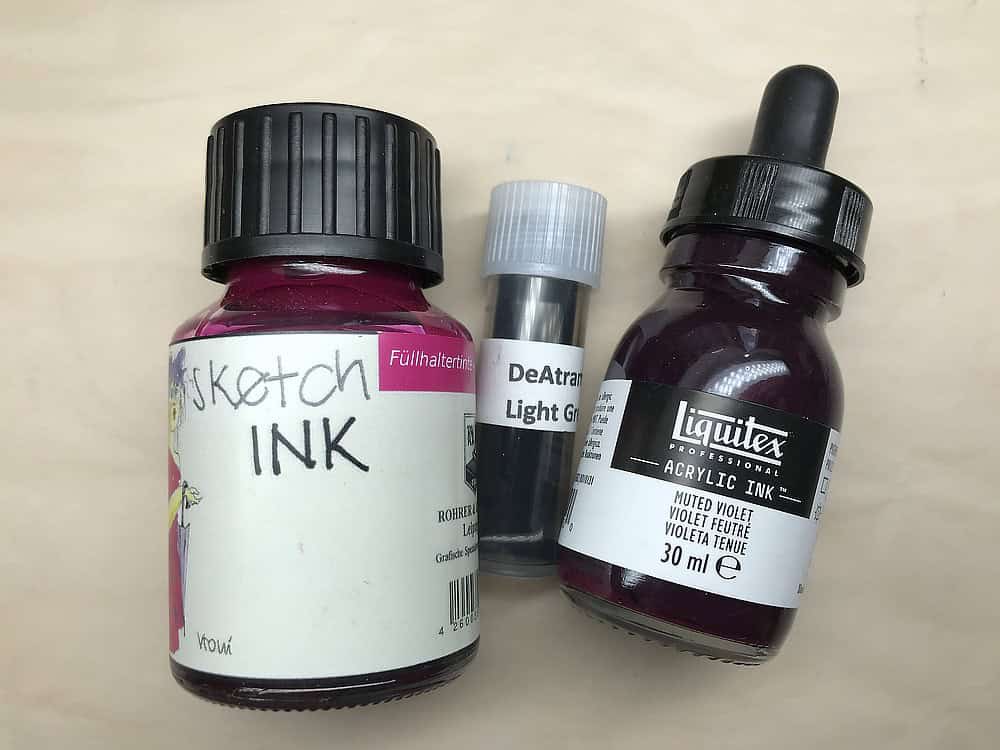
For fountain pens, you need to be a bit picky with your inks. Either you choose dye-based fountain pen inks (like school inks), those are usually non-waterproof and prone to fade (unless they’re document-proof). I mostly use those for taking notes.
Most other drawing inks are off limits for fountain pens, anything that’s based on acrylic or shellac should not go into a fountain pen, because the ink will eventually dry up and very likely clog the feed mechanism. In which case you will have ruined your pen. Also if it says India ink or China ink on the bottle – keep it away from your fountain pen.
There are a few companies who make waterproof inks for fountain pens. These inks have very fine nano pigments (or whatever the marketing name is these days), but they are still pigments and can do weird things inside the pen. They should be safe to use most of the time, I find that when you don’t use your pen for a while they can dry out a bit and make it hard to get the pen started again. Pigmented inks can also separate and form sediments in the converter/cartridge, or in the feed – if you use transparent pens this will leave visible traces. Most times, it’s ok to leave the pen parts in water over night, or give it a good clean with a syringe and maybe a pen cleaner. For all these downsides I still highly recommend these inks, I use them all the time.
I almost exclusively use Rohrer & Klingner SketchInk, because it comes in a lot of colors, flows great, is easy to obtain for me and it isn’t as prohibitively expensive as some of the other waterproof fountain pen inks. De Atramentis is another company who offer these kind of inks – they work great too, but more costly (R&K – 8€ per bottle, DeAtramentis 18€ per bottle). The R&K inks can be mixed with each other, and also thinned a bit with water for subdued colors. This makes them potentially harder to draw with, the ink flow is reduced and the nib will feel harder.
What I like and don’t like about this approach
Like:
- Overall, I really love the color range and the possibility these inks give me for field sketching.
- Fountain pens mean I can take inks everywhere with me without needing a dip nib pen, and in several colors too.
- I love being able to add watercolor over my line work.
- The range of lines you can get out of a pen is amazing.
- I very much like the handling and feel of fountain pens.
- These are tools that will last for years and are refillable – unlike most fine liners (although if you have pliers and waterproof ink, you can try to refill your pen).
Dislike:
- Occasionally, inks in fountain pens can dry and then it’s hard to get them started again without giving them a good clean, especially with those waterproof inks. So either you use all of your pens regularly or you have to spend time to reactivate them. Generally, the Preppy and Kaweco pens stay “active” and writable longer than the Lamys, which is why I have relegated all my Lamys to water-soluble ink. 😉
- I give all my pens a good cleaning from time to time just to be on the safe side. So there’s more maintenance than with fine liners or dip nibs.
- Refilling can be easy if you have a converter for each pen (costs extra), for refilling cartridges you will need a syringe – this is potentially messy (at least for me).
So far, I haven’t ruined a fountain pen with those waterproof inks, but you can definitely see that sedimented pigments leave traces in the feed mechanism. Of course, you can simply fill a fountain pen with dye-based inks, then you won’t have the advantage of being able to use any wet media on top. But activating inked lines with water can produce interesting effects, too.
All in all, ink is a medium I’m happy to have included into my sketchbook. What about you – do you use ink or pens at all for drawing? Do you prefer fountain pens or regular pens?
Further reading
- My favorite drawing tools right now (2021)
- Dip Nib And Fountain Pen Sketching – Comparing Steel Nibs And My Lamy Pen
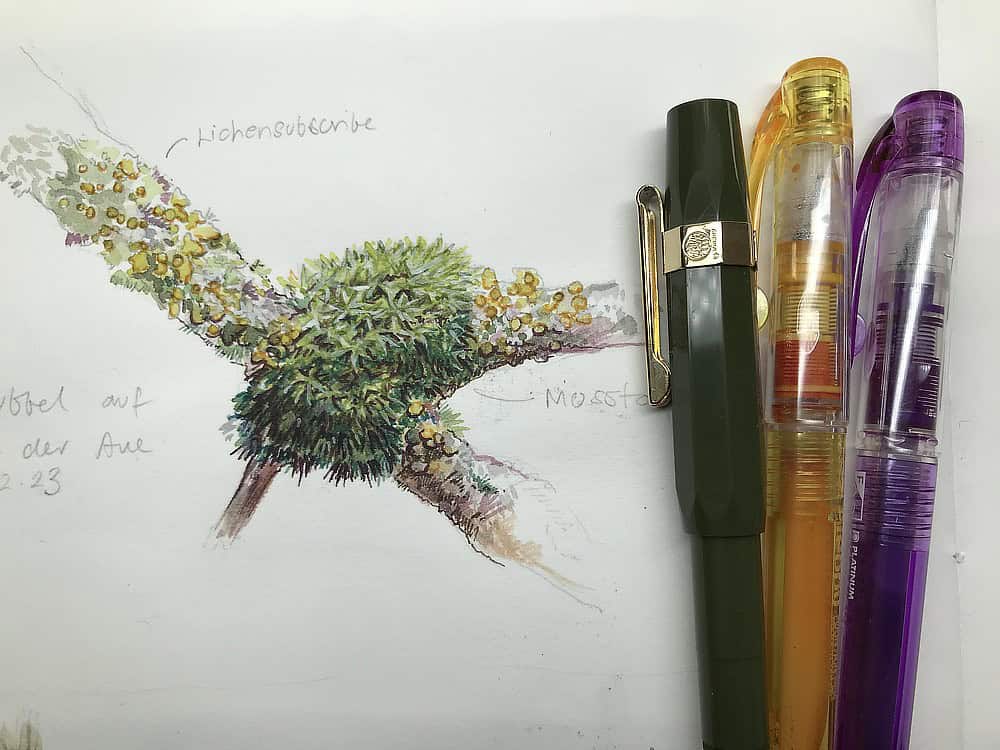

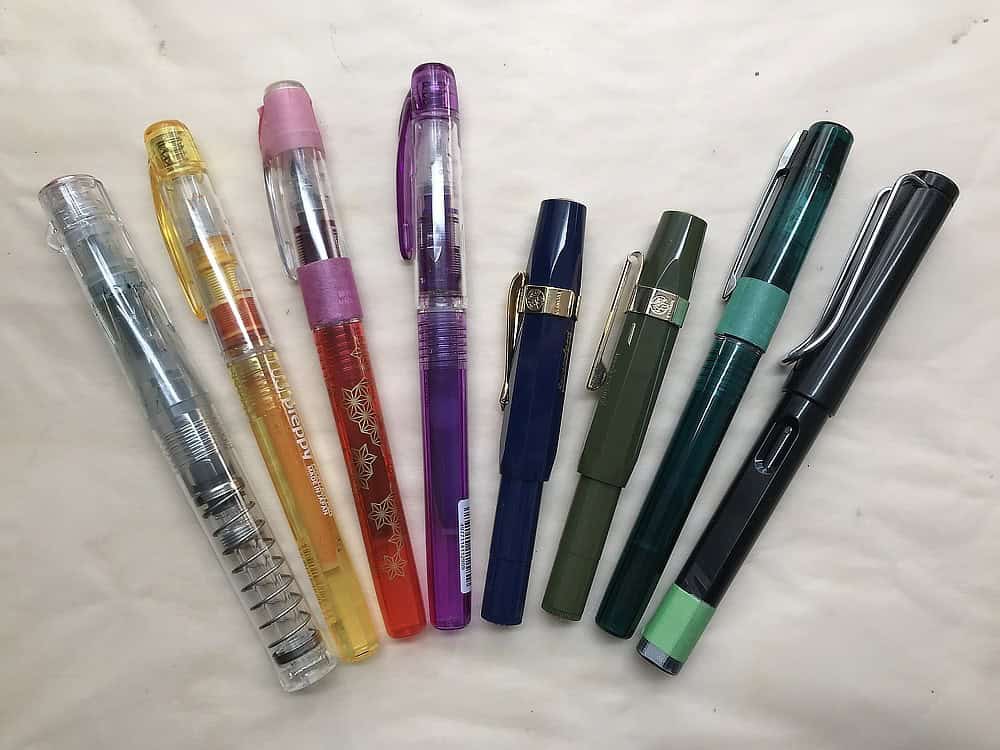

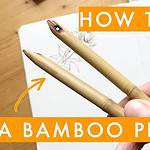
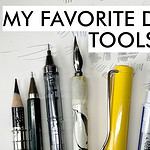
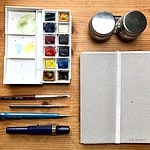
I very much like your approach to the pros and cons of using fountain pens in sketching. It is true that waterproof inks are very difficult to clean, but there are some fountain pen cleaners that can help you with the task. Try Monteverde Fountain Pen Flush and follow the instructions in the bottle. It’s always great to watch your creative process. Thank you!
Thanks for the tip! I use fountain pen cleaner from time to time, but I find it can be aggressive on the inner parts of the fountain pen.
I’ve always wanted to try fountain pens but get so overwhelmed by all the choices; so, it was great to read your recommendations detailing the quirks and benefits of each pen. So far, I’ve used the refillable .35 rotring isograph pen and dip pens. I love my rotring, but wish I could get the cool lines of a dip pen when sketching outdoors. Thanks for sharing. I’m excited to know some good options now!
Ah, I once inherited a technical pen, but it was beyond repair (when they dry up they’re so hard to clean).
There are probably dozens of other cool fountain pen models out there that I don’t know about, I hope you’ll find a nice one! But yeah, give them a try, they’re fun to use. 🙂
I have enjoyed your newsletter for about two years now. I share interesting articles with my art group and several them are now following you. I really appreciate your very clear instructions and the reviews you give on art materials. Your beautiful nature paintings are the envy of all my art group! Thank you so much for reaching an International audience. I look forward to your newsletters and save them all!
I second your recommendation of preppy pens. It’s amazing how well they work for a very affordable price and it is so nice that they don’t dry up like most fountain pens since I don’t use my pens regularly. And they also accept a converter so you can choose the ink you want to put in them. For someone new to fountain pens, this is a great place to start.
I use a Prera fountain pen (Pilot, Japan) for journal writing. For drawing I use Uni-ball Insight with waterproof ink, as well as Zig pens which use archival pigment ink. The only drawback is the limited variation in the line and the environmental cost of continual replacement. My long term goal is to use fountain pens for drawing so that I’m not purchasing so much plastic. Thanks for sharing your experience Julia. The Kaweco appeals to me.
Dear Julia,
Thanks for another great review of tools that you use, this time on my favorite one for sketching; couple of years ago I started with fine liners but I now much prefer how the fountain pens seem to adapt better to my hand and produce more interesting drawings. I also use affordable ones: Kaweco Sport (very portable) and Lamy (mostly at home); both have reasonable prices…and I also like to match the ink color with the barrel of the pen which is great 🙂
I also use Sketch ink from R&K and for the Kaweco I use the Super 5 ink, also waterproof and they have 2 nice colors: one called “frankfurt” that to me resembles the Paynes grey of watercolors, and another resembling the Prussian blue and called “Atlantic blue”. I find they are quite good.
Anyway, I enjoy your videos and posts so I’ll keep on reading & coming back to your old newsletters- so much to learn from them!
Take care,
Adriana